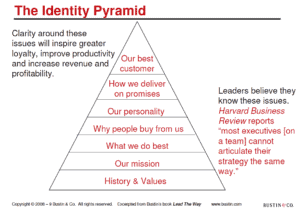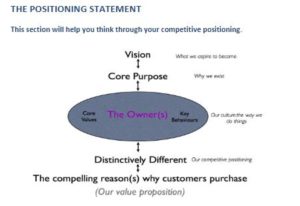
The Importance of Strategic Planning
Strategic Planning is the key to the success of any business, no matter its size or age. The strategic plan sets out:
- the company’s direction and priorities;
- its main operating and financial targets,
- the actions it will take to achieve those objectives,
- the new initiatives and investments planned, and
- their impact on performance.
As we swiftly approach the end of 2023, now is a great time for reflection. What were your objectives for this year? Are you on the way to achieving them, or are other things getting in the way?
Some SME owners keep plans in their head, but a formal plan is an extremely valuable tool for managing and growing a business, as it:
- clearly communicates the company’s priorities
- ensures all key staff are working towards common goals
- sets the focus on key objectives
- delegates actions and accountabilities amongst employees
- ensures that decisions made will benefit the long-term company goals
- highlights strengths and weaknesses.
Failing to plan is like planning to fail
Not spending quality time on strategic planning usually leads to a chaotic working environment. Our clients often talk about ‘not feeling in control’ and ‘not really knowing what is coming around the next corner’. When the plan is weak, business owners tend to operate without the same sense of conviction as those who allocate time and expertise to the planning process. Our CFOs often find that their clients have done some good planning and strategic thinking but need a devil’s advocate to ask the right questions and help to steer the ship in the right direction.
4 Mistakes Business Owners Can Make
- They don’t have a plan at all
- They don’t have a formal plan, it’s in their head which is difficult to share with others
- They don’t have an implementation timetable attached to their plan
- They don’t have a mechanism in place to conduct regular reviews
Without a comprehensive, up-to-date strategic plan and an implementation timetable, companies may be missing out on opportunities for growth and not realising their full potential. A formal plan can be an extremely valuable tool for managing and growing a business, as it allows a company to recognise its strengths and weaknesses.
The Importance of Reviewing Your Plan
Strategic Planning is integral to business success, however a plan is only useful if it is reviewed regularly to ensure it meets the current and future needs of the business. It’s vital business owners regularly review their financial strategy to ensure they have the right funding in place to meet the needs of their business, at its current stage of the business lifecycle.
Most CEOs simply don’t have the time to spend on quality strategic thinking and to document and communicate that thinking in a way which allows the whole business to buy into the vision. Harder still is managing and implementing the business plan. Significant strategic course corrections are commonplace in fast-growing companies. These should therefore, be embraced. The tricky part though is in managing regular change. That requires a combination of time and specialist knowledge.
There is an art and science to effective strategic planning. Getting it right brings a real sense of clarity and direction to a business – this is where an experienced part-time CFO can make a significant contribution.
Creating Your Plan
Step 1: Analysis
1. Analysis of Existing Situation – Organisational Philosophy & Mission & Value
- Does it reflect what you stand for?
- Do your people understand its true meaning?
- Does it make it clear as to how you have to compete and against whom?
- Is it simply written? Is it clear and unambiguous? Is it believable and realistic?
- Does it motivate people? Does it attract pride or cynicism?
- Does it give us some indication of what we should be doing and how we should be doing it?
- Do all the constituent parts fit and hang together?
- “Identity Pyramid” – do you have clarity around all the issues?

2. Internal Appraisal of Company
- SWOT analysis – revisit previous analysis & ensure it is complete & current
- Distinguish between endowments and core competencies
- Assess and audit core capabilities.
- Gauge fit between external environment and core capabilities
- Identify fit between customer requirements and core capabilities
Having identified what you perceive to be your competences ask yourself the following questions:
- Will this give us any source of long term sustainable competitive advantage? Clarify the how? (ie. how relevant is it to the needs of our customers (actual and potential)).
- Do customers (broadly) agree with our findings (ie. the market place)?
- Can competitors (present/future) emulate or do better? Do they share our perception?
- How was this list of core competences arrived at (eg. Training, innovation etc)?
- Any weaknesses/shortfall still? If so, what further investments will be required?
- Is there any impact on the strategic balance sheet (ie. Intangible and human assets)?
- Can it be levered, onto other applications and/or markets?
- What happens next?
3. Competitive Analysis
- What is the current process for this task?
- The Positioning Statement (competitive positioning) – refer below
- Scan present competitive position but focus also on future competition.
- Do you really know your competitors strategy?
- Understand changing face of competition
- Who could be a future competitor?
- Is your strategy and your competitors becoming more alike or more divergent?
- What is the most radical thing that your competitor(s) could do?

4.Value Proposition
- Consider or revisit the current Unique Sales Proposition within your Marketing plan & ensure it is complete and up-to-date.
- Do you know why your customers buy from you and not you competitor(s)?
- Have you asked them?
- How can you improve customer experience?
5. Environmental & Industry Analysis
- Consider legal, social, political, economic, technological, markets, labour position, society, pressure groups, and any other environmental issue.
- Assess potential impact of any change(s) and consider timing implications.
- Conduct intensive industry analysis.
- What is the long-term viability of the industry as a whole?
- What could change the industry dynamics?
- What is the nature of current industry changes i.e. radical, creative, intermediate or progressive?
- What could be the impact on your strategy and source of competitive advantage of such changes?
- Five years or so from now how will the industry leaders look and act?
Step 2: Strategic Thinking
1. Identify Strategic Alternatives
- All options to be examined – growth, acquisitions, alliances, JV’s, innovation.
- Upside and downside risks identified
2. Strategy Evaluation & Selection
- Clear choice to be made
- How will we compete?
- Evaluate impact of each option
- Will it give unique competitive advantage?
- Can it last? Can it be sustained?
- Will it differentiate us from our competitors?
- Can it be converted easily into a set of business objectives / KPI’s?
- How will competitors react?
- Easy to implement?
- Contingencies in place?
- What about the next wave?
- Is it consistent with customer requirements and industry changes?
- Will it create shareholder value?
- Is it financially viable?
Step 3: Implementation
1. Matching Strategy & Organisational Structure
- Do we have the necessary resources?
- Is there a logical fit?
- Is current structure adequate? Assess extent of change. Do not ignore culture effect.
- What about the organisation’s values?
- Is strategy personalised enough? Assess flexibility and robustness.
2. Allocation of Resources & Responsibilities
- Planning, Plans, budgets, controls, appraisals etc….. all to be consistent with strategy
- Strategy well translated into clear objectives
- Priorities and constraints identified
- Time horizons clearly laid out
- Management information systems to dovetail strategic choice
3. Regular Reviews & Adjustments
- Planning, plans, budgets, controls, appraisals etc…all to be consistent with strategy
Strategic Planning – How a CFO Will Guide You
Under The Spotlight – The CFO as a Strategist
Photo by Rohan Makhecha on Unsplash
Hire a superstar part-time CFO
To help you increase cash, profit and valuation and free you up from the burden of day-to-day operations.
